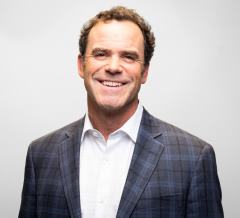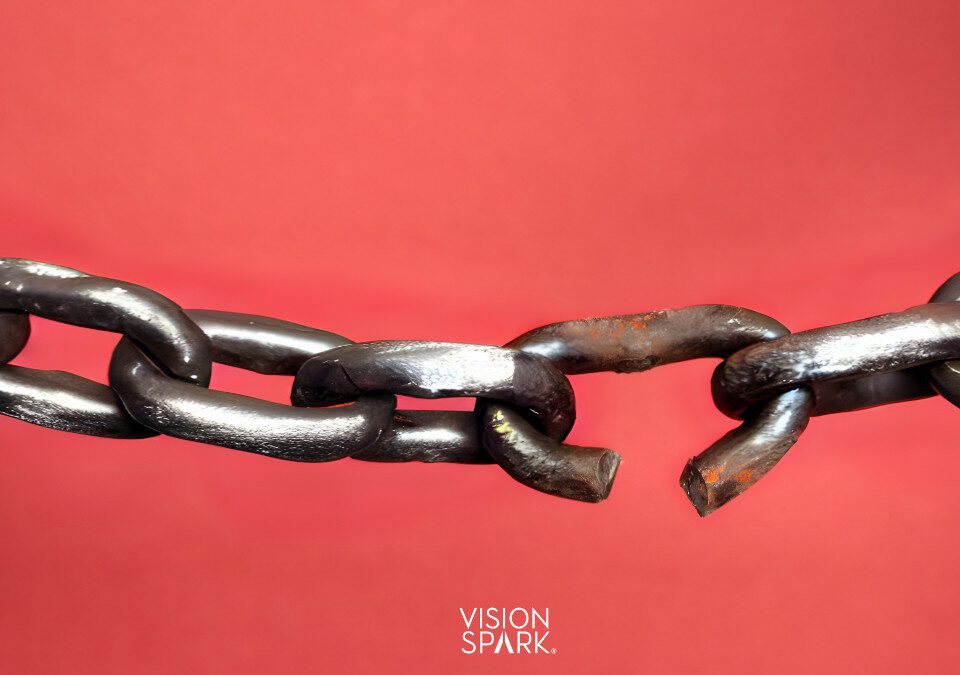
Cultivating a Courage Mindset to Change Your Company
August 20, 2019
Best Practices for Solving Your People Problems
September 19, 2019Featuring Certified EOS Implementer™ Alex Freytag of ProfitWorks

Alex Freytag
We recently published a post about why confidential searches are the wrong way to handle the replacement of “problem employees.” In this post, we are going to talk about the right way to handle an underperforming employee.
The ability to solve your people challenges is a decisive factor in the growth of your business. It’s something we are passionate about here at VisionSpark, and we know it’s important to growth-oriented business leaders whose companies run on EOS®. To tackle this topic, we enlisted the help of EOS Implementer and entrepreneur Alex Freytag. The following post is taken from an interview with him and represents his expertise. It has been edited for length and clarity.
How should you handle an underperforming employee?
Once you see signs that you have a people issue, addressing it head-on is the best path to resolution. Having identified that there is a problem, the next step is figuring out where the disconnect is; is it a Core Values issue? Is it that the person doesn’t have the GWC™ (“gets it,” “wants it,” and “capacity to do it”) required for the job? Or is it something else? Uncovering the source of the issue will help you determine the best resolution.
TIP: If you are new to EOS, download the EOS Toolbox™ (which includes tools like the People Analyzer™, Accountability Chart, and more) from EOS Worldwide here.
Assessing the situation
The People Analyzer is our go-to tool. We use that to start the process. It’s in a spreadsheet format, with the Core Values and GWC across the top. Down the side are the employee’s names. The people who are evaluating the question of “right fit” then individually score the team on a plus/minus (+, +/-, -) rating system for each value. Usually, we do this in the same room, and then we go around the group to see where everybody feels the person is, and take an informal average. The purpose of the People Analyzer tool is to create a conversation. It’s a starting point, and it leads to other tools. For example, the Accountability Chart is a major tool for drilling down on GWC.
On the Accountability Chart, we’ll look at the seat — just the anonymous seat, without caring about whose name is attached to it. What do we want from the seat? What does the company need from the seat? Then we list those responsibilities on the seat, and arrange them according to organizational structure.
The next step is mapping people to seats. We put the person’s name on the seat, and we ask the GWC questions: Do they get it? Do they want it? Do they have the capacity to do it? Those three questions are answered by the group with a “yes” or “no.” The “Get it” refers to whether they are genetically encoded to do the job. Do they truly “get” the ins and outs of the job; do all the neurons in their brain fire when they look at those responsibilities?
It’s different from “Want it,” which is pretty clear. The person either wants it, or doesn’t want it. I’ve recently seen many cases where, when we ask that question, the answer is that they really don’t want the seat. That’s important. They’re miserable, and they don’t want to get out of bed in the morning. And that lack of energy and passion for the seat is showing up all over the place.
The tougher one is the capacity. Capacity refers to the mental, physical, emotional, spiritual, and time capacity to do the job. The knowledge or skills aspect of capacity, sometimes that one’s more negotiable. You could say, they don’t have the capacity right now. But if we’re going to do training, and they’re getting mentored, then maybe in 12 to 18 months they’re going to have the capacity, so we choose to invest in them.

Determine the best course of action (“decide”)
Here’s where we enter the gray area. You’ve used the tools, you’ve entered a discussion about where this person isn’t measuring up or fitting in, and now you need to figure out how to deal with it. And this is really on a case-by-case basis. You don’t just fire everyone who is below the bar. We have to protect the company, of course; that’s number one. But we also have to figure out which of these people are coachable.
Sometimes people can be coached up. Sometimes they’re not aware that their behavior is misaligned with what the company is expecting. I just mentioned training someone for 12 to 18 months. Can your company afford to wait while someone who is otherwise a great fit is “trained up” to better fulfill what is required of their seat?
Maybe you’ll decide, “this person, we’re going to send her to training. This other guy, though, maybe he’s never going to be a good fit for the company based on Core Values. And maybe this person would be better suited to a different seat, so we need to make a lateral move.” There are little strategic judgments required for each situation.
That’s the whole concept around Gino Wickman’s book Decide. It’s a short eBook addressed to leaders (and you can download the whole thing for free here). It’s about how it’s less important what you decide than it is that you decide. So just decide. Avoid the temptation to “kick the can” on people decisions.
TIP: When you are thinking about letting someone go, it shouldn’t feel like it’s coming out of nowhere. This person’s boss or manager should have been having conversations with them. We call this “entering the danger,” which means having those tough, radically candid conversations that may be uncomfortable. The goal is to do it from a place of love, with the intent of helping the person succeed. For example, the manager might ask, “would you be open to some coaching?” And in these conversations, the manager should be armed with data points, coming at it from a place of facts, versus emotion.
Termination: the wisdom of “36 hours of pain”
There is a phrase “36 hours of pain”, which goes back to an often-referenced blog post from Gino Wickman. As the story goes, a business leader Wickman knew had waited for months to address a long-term employee who was no longer a good fit for the company. He put it off and put it off, as often happens with these things. When he finally made the decision to fire this person, he realized that when it was all said and done, it had only amounted to about 36 hours of pain. Afterward, everyone involved was able to move on and be happier and more productive. There was a realization that had they tackled the tough conversations head-on, and documented the misalignment from the start, they would have been able to move through the termination process more quickly.
So the concept of “36 hours of pain” refers to a few different things:
- It refers to that real pressure point where you are forced to have the difficult conversation;
- It’s a placeholder for the time it takes to actually rip the band-aid off; and,
- It’s a reference to the cost of putting off people decisions.
What happens in the “36 hours,” what does that look like? In those 36 hours, you want to be documenting. That’s when you are planning how you’re going to approach the termination process. Where is it going to be? Who’s going to be in the room? Is there some compensation that we’re putting in here? All these different elements of preparation, signing non-competes, and so forth. All so that when you get in the room and actually do it, it’s probably a five-minute conversation. If you’ve used those first 35 hours to prepare, it makes it much easier.
But we don’t have anyone to fill that seat…
There’s a story in this post about an owner who said something like “I’m not going to fire the CFO, even though his work is terrible and he’s incompetent…because we don’t have anybody to fill the seat.” What I’ve found is that when you take action to correct a people problem, you’re giving the other folks who are in that department an opportunity to step into that void. Nature abhors a vacuum. So you may get these young leaders stepping in and stepping up to help support. The company often bonds together, because they know it’s the right thing to do for the culture. If that fails, of course, there are outsourced options as well. You can get temporary help in there pretty quickly, usually.
Taking ownership
In that post I just mentioned, the business owner saw his CFO as the problem; the employee was viewed as a “bad apple.” That’s something that often happens; rather than recognizing that there is a problem with the process, the blame is pinned on the person who isn’t performing or fitting into that seat. Ultimately, the buck stops with the organization’s leadership. Not to mention, misplaced blame is a missed opportunity to fix flaws in the process and avoid repeating the same mistakes.
When you look at an Accountability Chart, you see the Visionary™, then the Integrator™, and then the major leadership functions. That’s the team that is leading the charge toward their vision, and they are responsible for the team that they’ve assembled. They need to own that. Instead of assigning blame to the individual, leaders should ask themselves (as Kim Scott suggests in Radical Candor), “how did I fail this person?”
It’s hard to change the mindset of putting the blame on the individual. As a leader, you have to look in the mirror first. Because there are dozens and dozens of creative solutions to help get the right people to fill out their seats so that they have the GWC nailed. It could be mentoring, training, technology, buddy system; those are just some of the things that companies are doing.
In conclusion
How is your approach to people problems affecting your business and its growth? It may be that your “people problem” is more of a process or leadership issue. The good news is, it’s fixable. Starting with the adjustments outlined here, it’s possible to get 100% of the right people in the right seats—and that’s when productivity really takes off! Stay tuned for our follow-up post featuring more insights from Alex Freytag about best practices for optimizing your team and tackling people problems.
Recommended further reading:
- Radical Candor, by Kim Scott
- Decide!, by Gino Wickman
- The Traction Library, by EOS Worldwide
- The Puppies and Stars Approach to Hiring, by Alex Freytag
- Why You’ll Regret Your Covert Search for a Key Hire, co-authored by Bob Spence and Alec Broadfoot
Image credits: © Canva





